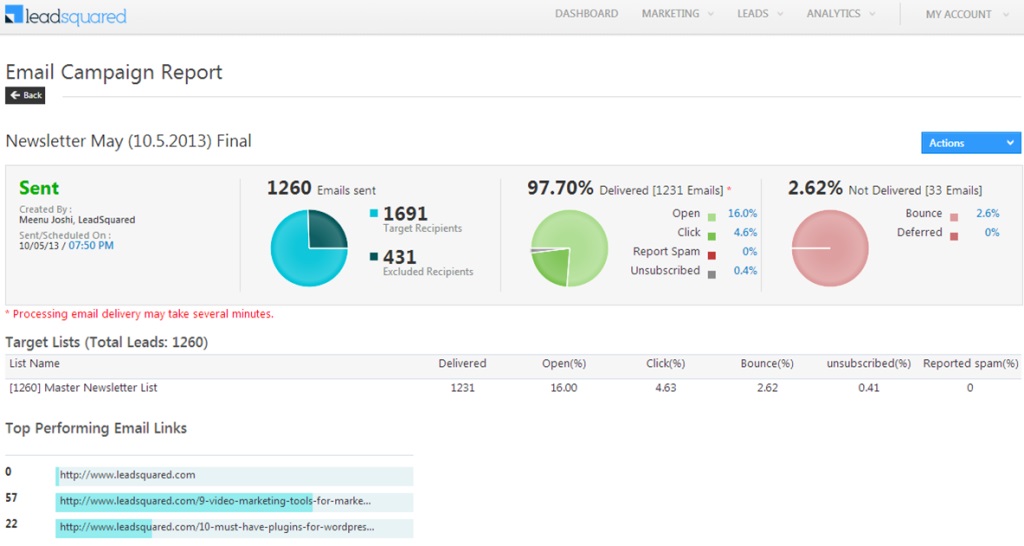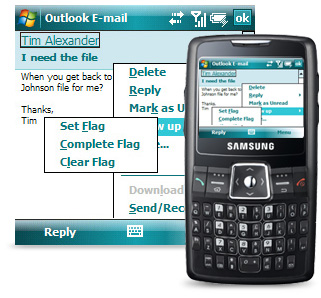The webinar on “Newsletter Marketing Best Practices” was a success, thanks to the support and active participation shown by the attendees. For those of you who missed it, here is a summary of the most asked questions at the “Newsletter Marketing Best Practices” webinar.
Webinar FAQs
Question 1
How long should each newsletter be? What should be the optimal number of words used in a newsletter?
It should not be very long; around 500-600 words is fine. The length would typically depend on the number of stories you are sending out. If you are covering one or two pieces of information, give a gist, and send the readers to your blog to read the rest of the story. If you are including just one story/piece which isn’t too long, then you can cover the entire story. It should typically fit into your desktop screen, and the subscriber should be able to see the whole thing on the page or if at all, with minimal movement of the mouse.
Question 2
How can your newsletter stand out in the mass of promotional mails in the inbox?
The number of promotional emails that are sent out everyday does make it difficult for your newsletter to stand out. However, it is important to understand that there is always a reason for your customer’s subscription. They are obviously interested in your content which is why they have subscribed to you. To make it easy for the recipients to recognize you in their inbox, you should have your company’s name somewhere in either the ‘Subject’ or ‘Sender’.
If you are sending them value adding content, they would make an effort to read it themselves. Also, if your procedure is set (i.e. you always send newsletters on a particular day of the week or a particular date of the month), it would help. One of our clients in the education industry has a perfectly set schedule for sending out their newsletter, and the students actually write back to them, in case they miss sending out the newsletter even once.
Question 3
In the content, can you consolidate news and key changes in the sector as a part of the newsletter?
There is absolutely no problem with consolidating news and key changes in the sector as a part of the newsletter. The important factor to be kept in mind is the interest of the subscriber. As long as the piece of information that you are sharing is of relevance to the customer, then subscribers won’t mind.
Question 4
How can one analyse which is the best time for the marketer to get the best response from different customer segments?
It depends on the segments. For example, in an education business, if you are targeting young students from class 12 or below, you would understand that they would go to school in the morning. So as per newsletter marketing best practices, the ideal time would be to send it in the evening.
If you are sending newsletters to a B2B firm, you’d rather not send it on Monday morning because everyone comes into work after the weekend so they are very busy and won’t have time to look at newsletters.
So basically, you need to try sending it at different times initially and access the open/click rate performance. Based on that analysis, you can decide the time. An email campaign report, like the one given below, will give you information on the campaign performance.

Question 5
Is there a difference in self-testing vs using a tool for testing newsletters? Would it hamper the response?
Using tools is always a good idea. With a tool, the life of the marketer becomes easier. Without a tool, the marketer has to do the hard work, of analysing the campaigns manually. It really depends on how much the business wants to invest in testing, rather, newsletter marketing. If newsletter marketing is a key part of your strategy, then you should invest in a tool. Any of the standard newsletter services should work.
Question 6
Suppose the content for a newsletter is from a different source; is that legally allowed or does the marketer require permission from the original source for the content in case of that newsletter?
You can use content. You don’t have to take permission unless and until there is an explicit mention of that on the website from which you are picking the content from. But in the internet parlance, the most accepted practice is to give credit to the party whose content you are sharing. If you do that, it’s good enough. In reality, people want their content to be shared. If their content is shared, it is likely that they might get more traffic or people come to know about their business.
Question 7
How can you make a newsletter look good on a mobile device?

There are two solutions for this.
Use a tool: There are tools which are available to modify emails for mobile devices. So you can avail tools for this purpose. But some of the tools may be expensive.
Test it yourself: The other way is to check it when you send out test emails. Everyone who sends out emails, tests their newsletters, either on Yahoo, Outlook or Gmail. At that time, you can check it out on your mobile phone – Blackberry, Android, iPhone, or any other mobile device and if necessary, go back and modify it.
Question 8
How long should we keep sending the newsletter? Until the prospect buys/enquires?
It is always a good idea to keep your contacts engaged, even after they become your customers, as long as you are sharing content beneficial to them. For example, in an education business, if students have bought your product and they are preparing for some exam and you send them preparation tips or video lectures, it would help. It would also depend on your industry though; if your customers do not wish to receive emails from you, you can exclude them.
Those were the most asked questions at the Newsletter Marketing Best Practices Webinar. Give us your feedback and feel free to ask us any further questions regarding newsletter or email marketing in general. For more information on newsletter marketing best practices, you can listen to the “Newsletter Marketing Best Practices” webinar here.









![[Webinar] Sales Automation 101: Unclog your Sales Pipeline](https://www.leadsquared.com/wp-content/uploads/2024/04/automation-webianr-popup.gif)